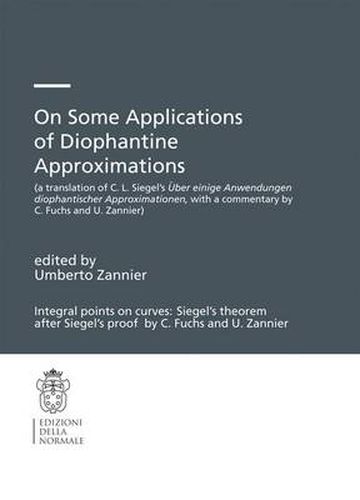Readings Newsletter
Become a Readings Member to make your shopping experience even easier.
Sign in or sign up for free!
You’re not far away from qualifying for FREE standard shipping within Australia
You’ve qualified for FREE standard shipping within Australia
The cart is loading…






This book consists mainly of the translation, by C. Fuchs, of the 1929 landmark paper UEber einige Anwendungen diophantischer Approximationen by C.L. Siegel. The paper contains proofs of most important results in transcendence theory and diophantine analysis, notably Siegel’s celebrated theorem on integral points on algebraic curves. Many modern versions of Siegel’s proof have appeared, but none seem to faithfully reproduce all features of the original one. This translation makes Siegel’s original ideas and proofs available for the first time in English. The volume also contains the original version of the paper (in German) and an article by the translator and U. Zannier, commenting on some aspects of the evolution of this field following Siegel’s paper. To end, it presents three modern proofs of Siegel’s theorem on integral points.
$9.00 standard shipping within Australia
FREE standard shipping within Australia for orders over $100.00
Express & International shipping calculated at checkout
This book consists mainly of the translation, by C. Fuchs, of the 1929 landmark paper UEber einige Anwendungen diophantischer Approximationen by C.L. Siegel. The paper contains proofs of most important results in transcendence theory and diophantine analysis, notably Siegel’s celebrated theorem on integral points on algebraic curves. Many modern versions of Siegel’s proof have appeared, but none seem to faithfully reproduce all features of the original one. This translation makes Siegel’s original ideas and proofs available for the first time in English. The volume also contains the original version of the paper (in German) and an article by the translator and U. Zannier, commenting on some aspects of the evolution of this field following Siegel’s paper. To end, it presents three modern proofs of Siegel’s theorem on integral points.